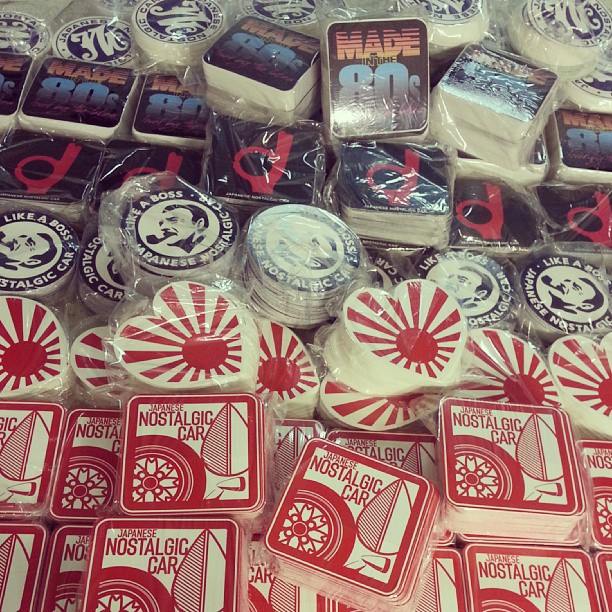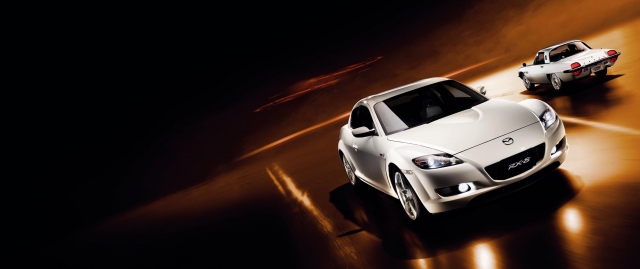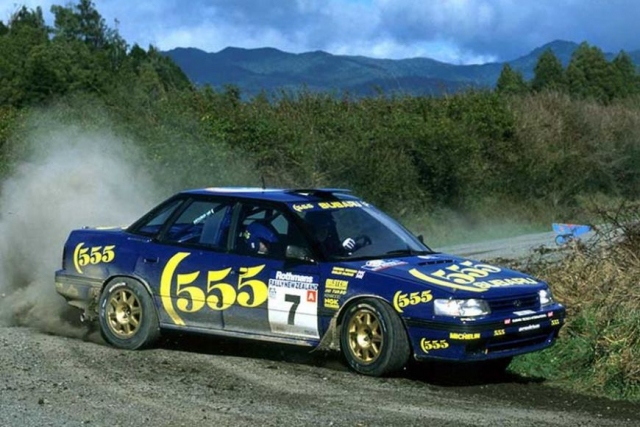There’s a lot of talk these days about whether we have passed the golden age of the automobile, and what the future of transport will bring. While technological improvements in safety, efficiency, and performance are hard to argue with, many of us hold on to an irrational love for cars of a certain era. What is that era for you? One could argue that the best period in Japanese motoring began in 1967 with the debut of cars like the Toyota 2000GT, Mazda Cosmo Sport, and Datsun Fairlady 2000. From there, it was a steady rise in automotive excellence moving hand in hand with Japan’s skyrocketing economy. The closing bookend is a bit harder to pin down, but 2003 seems like a pretty good stopping point. By then, cars like the 350Z, RX-8, and S2000 had been released, but it seemed like denouement.
What cars bookended your favorite era of Japanese cars?
The most entertaining comment by next Monday will receive a prize. Scroll down to see the winner of last week’s QotW, “Where’s the greatest place for Japanese cars outside of Japan?”
One of the things we love most about our readers is that you hail from all corners of the globe. Over the years, you’ve opened our eyes to many aspects of car culture we never thought of from our primarily US homes. This week, we had readers like Crank_case making a case for Ireland, Ellis for New Zealand, alcyon for Malaysia, Azfer for the Gulf Arab States, and エーイダン for Australia. There were home team votes like Dirty_S30‘s nomination of SoCal or Chase‘s vouching for Texas. It wasn’t easy to choose a winner this week, but in the end Styles had the most impassioned case, and it really made us want to visit New Zealand someday:
Well, disclaimer first, I am hopelessly biased on this. Quite simply, THE best place for Japanese cars outside of Japan is NZ. We’re fortunate to have had a long history with Japanese cars, and especially JDM cars, which we started allowing in to NZ in the 1980’s. My own Celica XX was imported in 1987. While our regulations aren’t as permissive now as they once were, we can still get plenty of JDM goodness, and thanks to our 20+ year rule we can get anything that is from 2000 and older. We have a huge market for JDM cars here, and while most commonly you’ll see Nissan Tiidas and Suzuki Swifts, you’ll also see Crowns, Skylines, Silvias and plenty else.
We’ve got a long history with nostalgics, and while they’re no longer daily drivers, it’s not at all uncommon to see RX-3’s, 240Z’s, and 1st gen Celica’s out and about on sunny days.
We have some fantastic driving roads, with varied terrain and geography, from the sub-tropical north with beautiful beaches, country roads that twist through farms and valleys, to majestic mountain passes in the south. Even in the centre of NZ’s largest city you’re only half an hour from some great roads.
We have plenty of events and a strong car culture, and plenty of race tracks dotted around the country.
Our fuel costs, while more than Australia and the USA is still reasonable compared to many other places, and likewise insurance, registration, and other running costs.
So, to conclude, NZ is the best because of the following. A great range of Japanese cars (both modern and classic), great roads, strong enthusiast culture, and reasonably ownership and running costs.
Omedetou, your comment has earned you a set of decals from the JNC Shop!









In my eyes there are two truly golden eras for Japanese cars; 1963 to 1973, and 1988 to 1993. While good cars exist outside of these eras, these were the periods when amazing world-class cars were unveiled in Japan, one jaw-dropping launch after another.
The ‘chrome’ era opens with the October 1963 introduction of the Honda S500, significantly marking the debut of Honda as a car maker with a vivid announcement of their willingness to push boundaries both technical and legal. The era closed in March 1973 when Nissan withdrew the C110 ‘Kenmeri’ GT-R from sale before 200 examples had been sold. Society had become less interested in power and speed, and more concerned about fuel consumption, air pollution and road safety. We started to see detuned engines, softened suspension and softer velour, all boxed up in a body with more right angles than a crossword.
Fifteen years later the ‘bubble’ era was inaugrated by Nissan, who had set themselves an admirably simple goal: to become the Number One brand for dynamics by 1990. Any and every engineering project could now be easily justified, and the first fruit of this uncompromising approach appeared in 1988 with the S13 “Art Force” Silvia. The 16V intercooled CA18DET up front paired with the new multilink independent rear suspension, honed into an attractively streamlined body. Now Japanese cars surged ahead of the worldwide competition; the NSX eclipsed the Ferrari 348, the Impreza WRX and Mitsubishi Evo succeeded the Sierra Cosworth, the GTR blew away the competition at Bathurst.
The economic bubble burst but it was too late to stop the engineers’ dreams, the money had already been spent. Nissan’s rivals had been forced to go with them, with Toyota delaying their Supra replacement to ensure it was competitive against the 1989 300ZX. Thus delayed, the A80 Supra finally appeared in 1993 with the world’s best-built engine, a drag-spec six speed gearbox, sequential turbochargers, sophisticated suspension and organically curved styling. 1993 thus saw the last *launch* of the bubble era, although one could well make a case for 2002 marking the end of this era, since the S15, Supra, RX-7 and R34 GT-R all bowed out then; the NSX kept the torch burning for another three years with a facelift, but was a car out of its era by then.
Looking at it another way, the car that called time on the bubble era appeared in 1994. A year after Toyota launched the Supra, they unveiled the car of the future, the RAV4. Not the future that many of us JNCers wanted, perhaps, but the future we got, with road-oriented crossovers expanding to half the market, crowding out sports cars.
I’d love the idea of a third golden age of Japanese cars, even if they aren’t the roaring sports cars of the past. However software is now eating the car industry, and the risk-taking, non-hierarchical, almost whimsical world of programming is a huge challenge, a culture shock, for the established and structured Japanese car giants. I hope that someone in Japan can pick up the gauntlet and recreate the energy of disruptive startups such as Honda in the 50s and 60s.
So to actually answer the question 🙂 my favourite era is the bubble era, it was opened in 1988 with the S13 Nissan Silvia, and closed in 1993 with the arrival of the A80 Toyota Supra.
This brought a tear to my eye because it was so true.
For me it’s the 80th and the early 2000s. I love the boxy 80th design and the underdog image of the Japanese cars. It was a sensation back then for Japanese cars to win the first comparison tests in german car magazines against german manufactures.
The early 2000s are great because of the mentioned and critisised sporty affordable cars like the 350Z, S2000 and of course the RX-8, the car I drive.
Oh, this is tough. There are so many categories. You could pick based on styling, refinement, popularity. However, for me it’s what I would call the “Turbo” era of JNC’s.
I realise that there have always been performance cars in the JNC scene, but to me the period from the early 80’s through to the late 90’s were a special period, where practically every line from every manufacturer had a turbo, supercharged (or both) option. Starting with the face-lift 430 Cedric/Gloria with the L20T – the first turbocharged Japanese engine, through to the end of the Starlet Glanza V. In between this period just about every line had some form forced induction available. March Turbo, Levin GT-Z, Mazda Familia GT-X, Toyota Celica GT-Four, Cedrics, Skylines, Cefiros and Laurels, Chasers, Mark II’s, Kei cars, station wagons, people movers, Sedans, coupes, even some vans came with turbo options!
It was a glorious time, before practically everything except specialist models (WRX, GT-R, Evo etc.) became NA.
I have the 70 240Z and the 70 510 coupe s bookends.
Being a Southern California Mazda rotary guy, it started for me in the summer of 1970, with the rollout of the RX-2, and the streets became full of them. Then through the RX-3, RX-4, REPU, and the RX-7. RX’s defeating the Skyline in Japan in the early 1970’s. Success in IMSA racing starting in the mid-late 1970’s. International endurance racing and Le Mans starting during the period. The Eunos Cosmo 3-rotor engine in 1990. The shining moment was 1991, with Mazda winning Le Mans overall and rolling out the FD RX-7. Throw in the Miata in the late 1980’s, too, for extra credit. After 1991, it was all a replay of what Hiroshima had already accomplished. So the sweet spot was 1970 through 1991 for this rotorhead.
Generally speaking I’d say the end for 98% of the cars I’d be wanting to own is the year 2002. 2002 we lost the R34 Skyline, soon after the Integra/RSX vanished, the Celica after that, the A80 supra was already gone….the 300ZX Fairlady was put to pasture in 1998. Honda buried the Prelude in ’01….the Silvia in 2001 as well…..And on a non-Japanese note the Ford Escort RS Cosworth vanished in 1996, the best Ford EVER made. The only car post 2002 I would truly want is………a 2010 Holden Ute SS-V strangely enough. In fact that is the number one car I’d want to own above all. The pre-2002 is just a basic guideline, with bearing Japanese cars in mind first.
Apologies for the muddled response, just got lost in my thoughts. 🙂
For me, here in the USA, the AE86 marked the end of my favorite era of the small, affordable, M/T, RWD car, especially coupes. Honda started the tsunami of cost-cutting FWD econoboxes in the 70s but all of the manufacturers eventually followed suit. Sure there were a few last gasps such as the S13 200SX (one year too late for me) but the RWD chassis became reserved for the upscale (Lexus and Infiniti) and specialized and/or niche cars (Z-cars, RX7, Supra, MR2, and the Miata) and trucks. It was so bad (to me) in 1988 that, when I was looking for a new car for economy and reliability for new 25-mile commute for my new job, I decided to buy a 1988 Toyota pickup because it (and other minitrucks) was the only RWD vehicle that fit my budget. I still own the truck to this day and now, it also represents another bygone era of the small, minitruck. I appreciated Toyota’s and Subaru’s effort to revive the genre enough to buy a new FRS to show my support in spite of that flat four motor. However, I don’t see small, RWD, M/T, affordable coupes coming back in a big (or even medium) way anytime soon… 🙁
Being of a certain age, my favorite cars began in 1989, or what I like to call the Gran Turismo generation. You had the R32 Skyline, Z32 300ZX TT, S13 Silvia, NA Miata, FC3S Turbo II, Lexus LS400, and so on. Soon the NSX, FD RX-7, 3000GT, MR2 Turbo, Supra TT would follow. These were peak Japan, and portrayed brilliantly in the Gran Turismo series of video games. If any of these cars had subsequent generations, they got only better. R33, R34, S14, FD, and so on.
It all came to an end in Y2K. All those cars died without being followed up by better replacements the effects of the Bubble Economy were felt. Cars like the Honda S2000 and Lexus IS300 were the last great Japanese cars introduced that weren’t headed in a downward trajectory. The RX-8 wasn’t as great as the FD, the 350Z wasn’t as great as the Z32, the MR2 Spyder wasn’t as great as the SW20, the RSX wasn’t as great as the DC2, the NC wasn’t as great as the NB and so on.
The culmination of this era was proven in Gran Turismo 2, which was released just before Christmas, 1999. An unprecedented number of cars, over 600, blew away any racing game that had come before it. Later games in the series had better graphics and even more cars, but GT2 was transformational and it really seemed like the celebration and the end of chapter.
To answer the question though, I will say the cars are the R32 Skyline GT-R and the Lexus IS300.
I would have to say there is a golden age, and a silver age, which do indeed overlap. There are different genres within Japanese car styling that I believe to be separate and distinct. The golden age of Japanese cars for me is 1965, with the first showing of the Toyota 2000GT at the Tokyo motor show, up until 1995/2002 with the respective demise of the FD RX7 and the MK4 Supra. These 3 cars are some of the amazingly designed cars of all time. This genre includes the S30 Z chassis, and the Hakosuka and Kenmeri skylines. These are all cars that were designed so amazingly that I would say all of them are timeless favorites that no one will say yeah that one is just ugly. They have all appreciated greatly over the years (some more so than others) and all are just designed so beautifully and have such joy inducing driving potential, I put them as the cars and I dare say the ambassadors of the golden age of Japanese automotive production.
Now on to the silver age. This is bookended in my opinion by the Datsun 510, and ends in 1998, when America had to like say a very tearful goodbye to Nissans S14 240SX. I know there was the S15, but seeing as they are still illegal for us here in the US, I’m not counting it. This “age” is made up of more inexpensive (for us nowadays) but equally if not more fun streetable “commuter cars”. The kind of car that was meant as an economic but fun commuter or family car, but turned out to be capable of so much more. This age includes the TA/RA Celicas, TE Corolla, AE Corollas (king 86 right there), S13, S14, NA Miata, FB and FC RX7’s ( ok so those aren’t so economical on the gas). These are cars which while they probably don’t win any beauty pageants, still look amazing, and can be made to look even more amazing, and are actually affordable to kids still today. Like, they are at least usually under 10,000$ for a really nice example. Which is much more than I can say for oh let’s say an FD. No such luck. And I think that is because while the cars of this silver age have a huge following, it is sometimes more in the realm of a cult following, while the golden age cars have attained the level of timeless classic. I really like these “silver” too though. That’s why I’m including them.